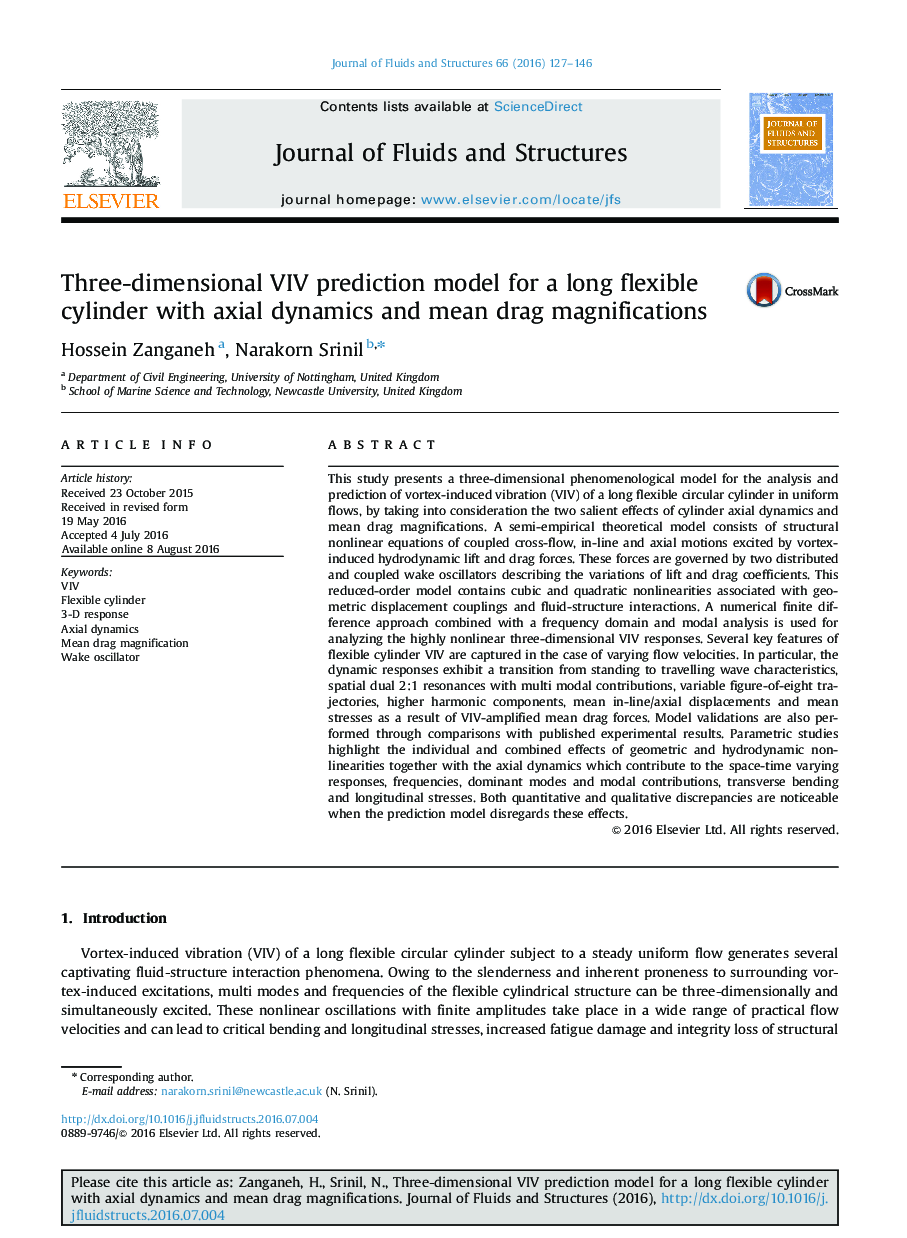| کد مقاله | کد نشریه | سال انتشار | مقاله انگلیسی | نسخه تمام متن |
|---|---|---|---|---|
| 7175868 | 1466581 | 2016 | 20 صفحه PDF | دانلود رایگان |
عنوان انگلیسی مقاله ISI
Three-dimensional VIV prediction model for a long flexible cylinder with axial dynamics and mean drag magnifications
دانلود مقاله + سفارش ترجمه
دانلود مقاله ISI انگلیسی
رایگان برای ایرانیان
موضوعات مرتبط
مهندسی و علوم پایه
سایر رشته های مهندسی
مهندسی مکانیک
پیش نمایش صفحه اول مقاله

چکیده انگلیسی
This study presents a three-dimensional phenomenological model for the analysis and prediction of vortex-induced vibration (VIV) of a long flexible circular cylinder in uniform flows, by taking into consideration the two salient effects of cylinder axial dynamics and mean drag magnifications. A semi-empirical theoretical model consists of structural nonlinear equations of coupled cross-flow, in-line and axial motions excited by vortex-induced hydrodynamic lift and drag forces. These forces are governed by two distributed and coupled wake oscillators describing the variations of lift and drag coefficients. This reduced-order model contains cubic and quadratic nonlinearities associated with geometric displacement couplings and fluid-structure interactions. A numerical finite difference approach combined with a frequency domain and modal analysis is used for analyzing the highly nonlinear three-dimensional VIV responses. Several key features of flexible cylinder VIV are captured in the case of varying flow velocities. In particular, the dynamic responses exhibit a transition from standing to travelling wave characteristics, spatial dual 2:1 resonances with multi modal contributions, variable figure-of-eight trajectories, higher harmonic components, mean in-line/axial displacements and mean stresses as a result of VIV-amplified mean drag forces. Model validations are also performed through comparisons with published experimental results. Parametric studies highlight the individual and combined effects of geometric and hydrodynamic nonlinearities together with the axial dynamics which contribute to the space-time varying responses, frequencies, dominant modes and modal contributions, transverse bending and longitudinal stresses. Both quantitative and qualitative discrepancies are noticeable when the prediction model disregards these effects.
ناشر
Database: Elsevier - ScienceDirect (ساینس دایرکت)
Journal: Journal of Fluids and Structures - Volume 66, October 2016, Pages 127-146
Journal: Journal of Fluids and Structures - Volume 66, October 2016, Pages 127-146
نویسندگان
Hossein Zanganeh, Narakorn Srinil,